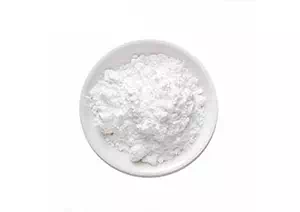All Categories


Sodium Salicylate CAS 54-21-7, Sodium Salicylate, CAS 54-21-7
Sodium salicylate (54-21-7), as a classic salicylate derivative, has its core value concentrated in:In the medical field: Basic antirheumatic medication, but be vigilant about gastrointestinal and neurotoxicity.
CAS : 54-21-7
Formula : C7H5NaO3
Mol. wt. : 160.1
EINECS : 200-198-0
| CAS | 54-21-7 |
| Molecular formula | C7H5NaO3 |
| Molecular weight | 160.1 |
| EIENCS | 200-198-0 |
| Form | Crystals or Crystalline Powder |
| Melting point | >300 °C (lit.) |
| boling point | / |
| Density | 0.32 g/cm3 (20℃) |
| Solubility | 1000g/l |
| PKA | / |
| Color | White |
| Storage temp |
Sodium salicylate (54-21-7), as a classic salicylate derivative, has its core value concentrated in:
In the medical field: Basic antirheumatic medication, but be vigilant about gastrointestinal and neurotoxicity.
Industrial multi-scenario: From rubber modification to organic synthesis, relying on its stable chelating ability;
Safety first: Protective measures (gloves and goggles) are required during operation, and storage should be protected from light and moisture.
Pharmaceutical industry: Antipyretic and analgesic, anti-rheumatic (rheumatic fever, rheumatoid arthritis), inhibition of cyclooxygenase, and reduction of prostaglandin synthesis
Organic synthesis: Raw materials (dyes, resins), preservatives, gastric juice free acid detection reagents, providing the structure of hydroxybenzoic acid
Rubber/plastic: Reinforcing agents (increase hardness and wear resistance), improve the mechanical properties of materials
Daily chemicals and food: Cosmetics (exfoliation, whitening), food preservatives, pH regulation, antioxidation, chelating metals
Toxicity data:
Intraperitoneal injection of LD₅₀ in rats: 780 mg/kg;
Excessive intake by the human body may lead to gastrointestinal reactions (nausea, vomiting), tinnitus and dizziness (salicylic acid reaction).
Risk Warning:
Harmful (Xn) : Ingestion harmful (R22)
Irritation (Xi) : Irritating to the eyes/skin (R36/R41).
Taboos and precautions:
Contraindicated for those with allergies. Prohibited for pregnant women (may cause teratogenicity through the placenta);
Patients with impaired liver and kidney functions and peptic ulcers should use with caution.
Avoid using it in combination with anticoagulants (such as dicoumarin) and hypoglycemic drugs (such as methylsulfonylurea), as it may enhance toxicity.
* Prompt reply and 24 hours online, professional team to provide best price and high quality product.
* Sample testing support.
* Every batch of products will be tested to ensureits quality.
*The packing also can be according the customers` requirment.
*Any inquiries will be replied within 24 hours.
*we provide Commerical Invoice, Packing List, Bill of loading, COA , Health certificate and Origin certificate. If your markets have any special requirements, let us know.